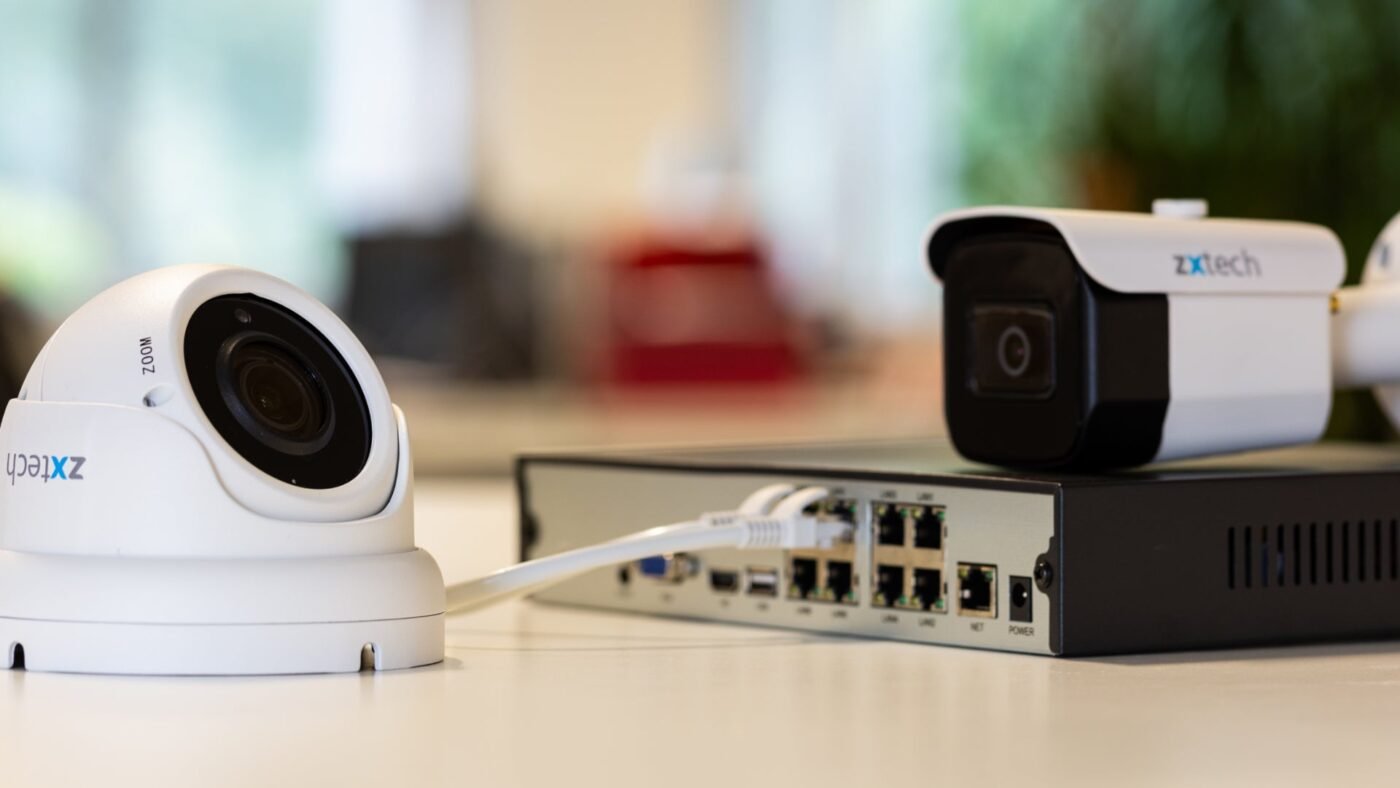Power over Ethernet (PoE) Security Camera Cabling Guide
Power over Ethernet (PoE) has transformed security camera installation, cutting complexity and costs by transmitting both power and data over a single Ethernet cable. For robust security in Kenya, understanding PoE cabling is the foundation of a reliable system.
What is Power over Ethernet (PoE)?

PoE is a networking standard that uses a single cable for both data and power. The Power Sourcing Equipment (PSE) (e.g., a PoE switch or injector) intelligently supplies DC power to the Powered Device (PD) (your camera), ranging from 15.4W (PoE) to 60W (PoE++) without interfering with simultaneous high-speed data (10/100/1000 Mbps or higher) transmission. This dual functionality is vital for security cameras requiring both high-bandwidth video and continuous power.
Cable Requirements for PoE Cameras
Selecting the right cable is non-negotiable for stable PoE performance:
| Cable Type | Supported Speed/Feature | Optimal Use |
| Cat5e (Minimum) | Data & Power up to 100 meters | Standard installations, meets basic PoE needs. |
| Cat6 (Recommended) | Higher Data Rates (4K Video, PTZ), Better PoE | High-resolution cameras, superior performance, better for PoE. |
| Cat6a (Premium) | 10 Gigabit Ethernet over 100 meters | Future-proofing, next-generation camera systems. |
Key Material: Always choose Solid Copper Conductor Ethernet Cables over cheaper Copper-Clad Aluminum (CCA). Pure copper ensures lower resistance, efficient power delivery, and reduced heat, crucial for higher-power PoE+ and PoE++ devices.
Shielding:
- STP (Shielded Twisted Pair): Provides protection against electromagnetic interference (EMI) in industrial or noisy environments.
- UTP (Unshielded Twisted Pair): Suitable for most residential and low-interference commercial settings.
Distance Limits for PoE

The fundamental distance for reliable PoE is 100 meters (328 feet) between the power source and the camera. Exceeding this limit causes a significant voltage drop, leading to unreliable operation or complete camera failure, especially with higher-power devices.
- Long-Distance Solutions: Use PoE Extenders to regenerate power and signal, effectively creating new 100-meter segments to reach distances of 200m, 300m, or more.
- Alternatives: Fiber optic converters with separate power injection or strategically placed network switches can also extend reach.
Best Practices for Installing PoE Camera Cables in Kenya
Kenya’s unique environment demands specialized cable considerations for reliability:
| Environmental Challenge | Best Practice |
| UV Exposure | Use UV-resistant jacketed cables for all outdoor runs (standard PVC degrades quickly). |
| Temperature | Use cables rated for extended temperature ranges (e.g., −40∘C to +75∘C) in non-climate-controlled or outdoor areas. |
| Moisture | Employ moisture-blocking gel/tape and ensure weatherproof enclosures for all outdoor connections during rainy seasons. Use drip loops. |
| Power Surges | Install PoE-specific surge protectors at both ends of outdoor runs and ensure proper grounding. |
| Physical Damage | Use conduit or direct-burial rated cables for underground runs; ensure proper support for aerial runs. |
Recommended PoE-Ready Cables
| Installation Type | Recommended Cable | Key Feature |
| Premium Outdoor | Cat6 Direct Burial Cable with Gel | Solid copper, PE jacket (UV resistant), moisture-blocking for underground/aerial use. check this guide for outdoor ethernet cables in Kenya |
| Standard Outdoor | Cat6 Outdoor Rated Cable | UV-resistant PVC jacket with solid copper conductors. |
| Indoor/Protected | Cat6 Plenum Rated Cable | CMP-rated jacket for fire safety in air-handling spaces. |
| High Interference | Cat6 Shielded (STP) Cable | Foil and braid shielding for maximum EMI protection. |
| Budget-Conscious | Cat5e Solid Copper Cable | Meets minimum PoE requirements while maintaining reliability. |
Conclusion
The investment in quality cables and proper installation techniques pays dividends through reduced maintenance and enhanced security. By matching cable specifications to application requirements, and addressing distance limits and Kenyan environmental factors, you ensure optimal camera performance and long-term system reliability.
Ready to build your PoE security system? here’s the ultimate guide to Shop Ethernet Cables for PoE Security Systems and get professional-grade cables that ensure reliable power and data transmission for your surveillance installation. Our selection includes indoor, outdoor, and specialized cables designed for Kenya’s unique environmental conditions.


